Garlic harvest day included the last of the onions. The gorgeous harvest yielded robust shares of garlic and onions for gardeners here and for the Montpelier Food Pantry as well as our entire stock of garlic seed, which we’ll plant later in the fall.
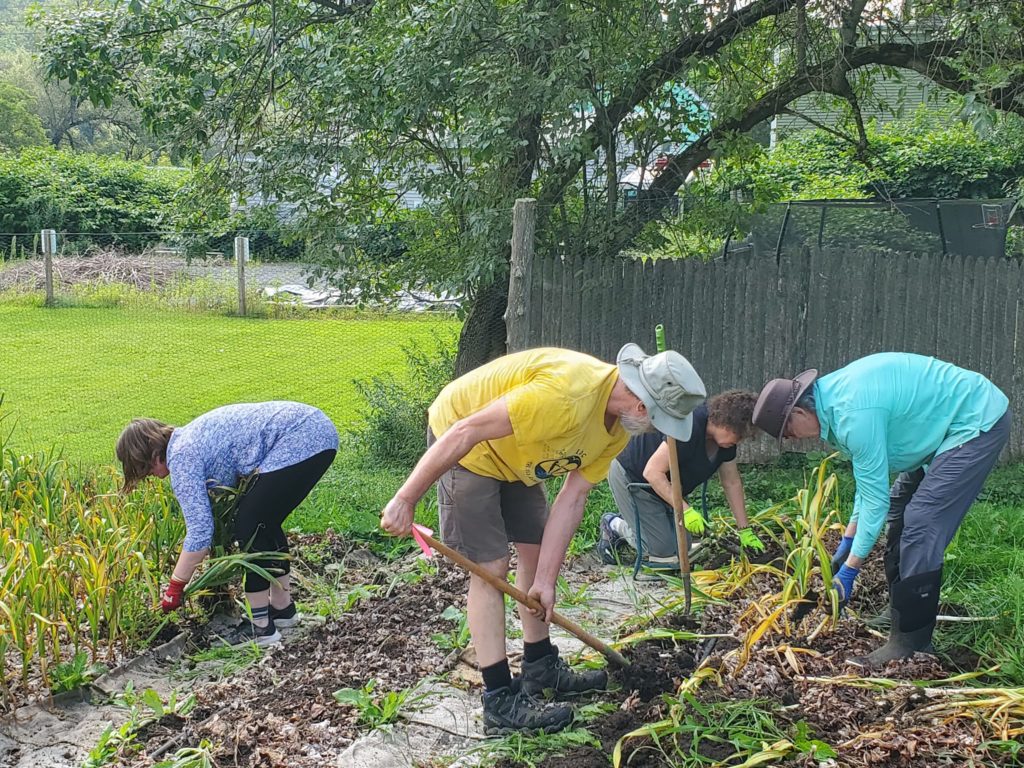
Garlic heads pull or shovel easily from the moist soil. We harvest alliums early to ward off damage from a recent garden crop predator, the leek moth. Leek moths lay eggs in the leaves of garlic, onions, and other allium plants. The larvae hatch and burrow down the leaves toward the head or bulb. Harvesting in early August ensures gardeners beat the pests to the bulb, preserving the crop we want. The leaves look spotty, but the food remains perfect.
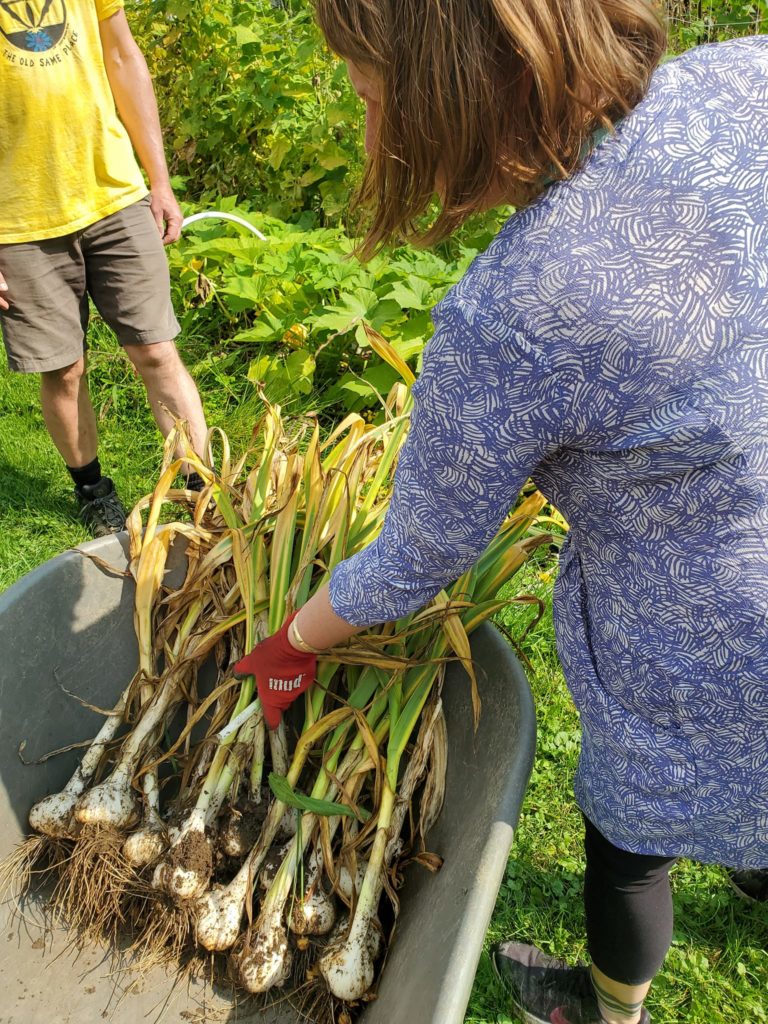
Load after load of garlic, separated by variety, moved from the growing beds up to the sorting area.
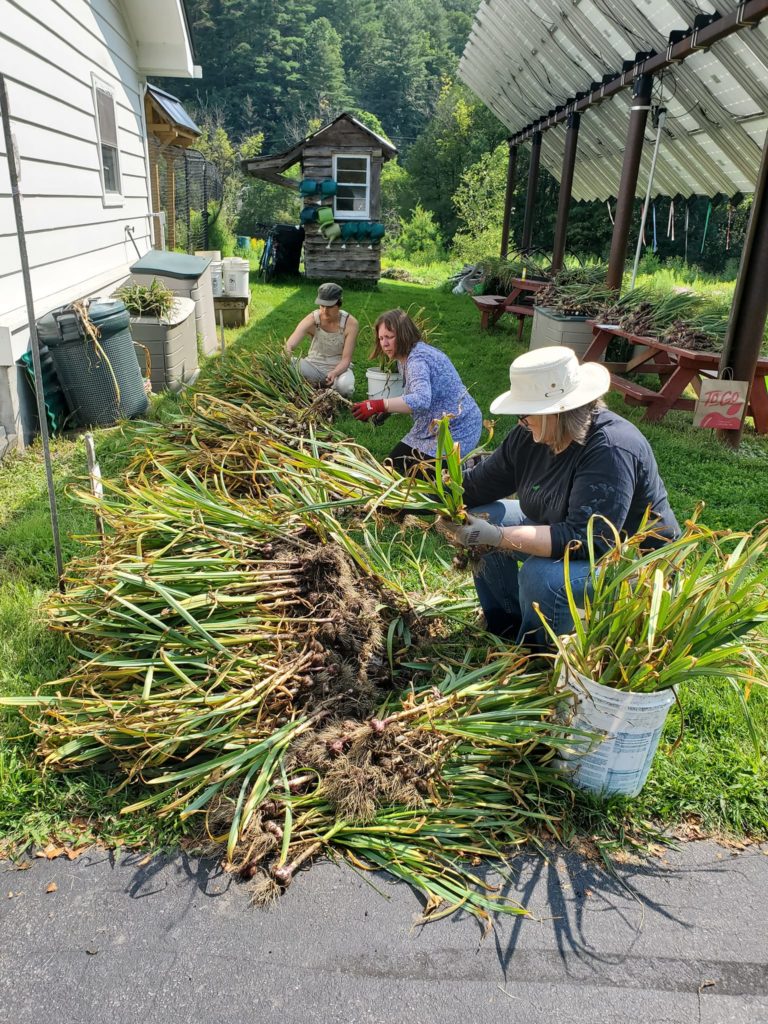
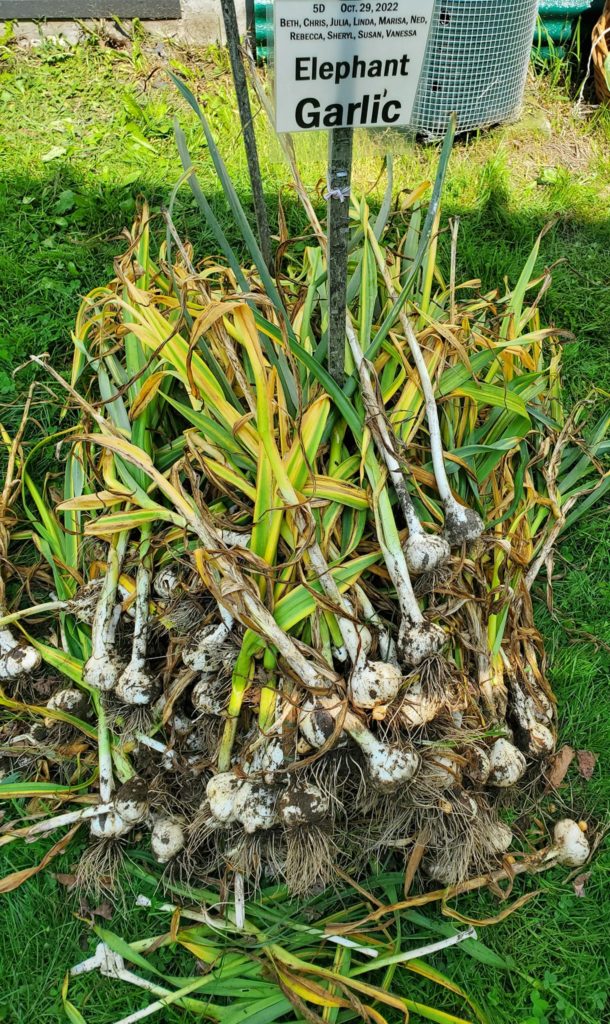
Gardeners sort garlic by type: elephant garlic (not a true garlic, but more of a leek relative), jell strain, Moreno hillside, and porcelain. A key part of garlic sorting is reserving the biggest, healthiest heads to become seed for the next season’s crop. It’s the only crop this garden produces all its own seed for.
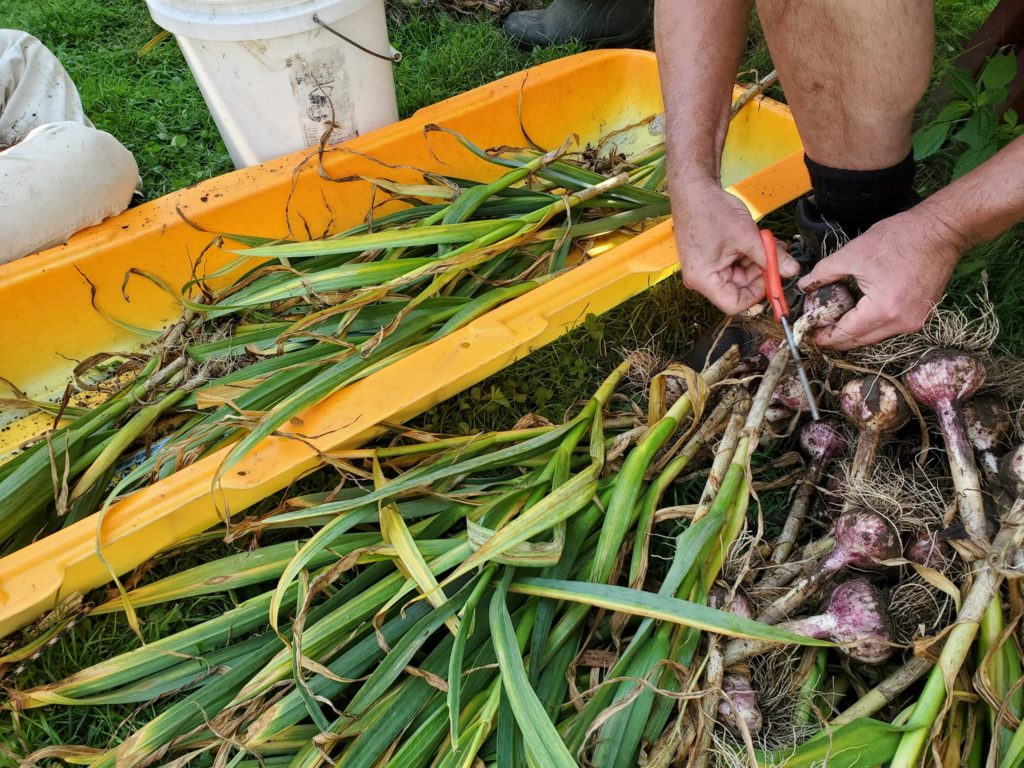
Cutting the leaves from the garlic and onion plants ensures that any leek moth larvae are separated from their path to our food. The buggy leaves are safe to add to the garden waste windrow for composting. Leek moths fly about three times per garlic season here, and composting affected leaves does not spread them to other plants.
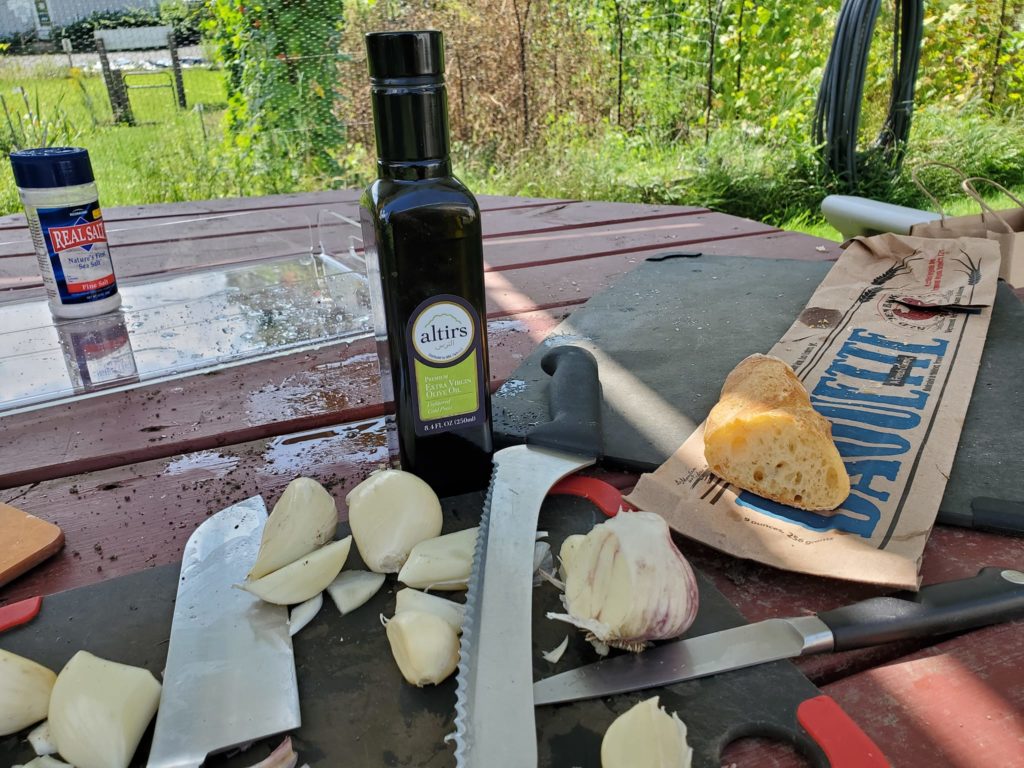
Gardeners tasted the varieties of garlic on a local Red Hen baguette with olive oil and salt. Those with more sensitive palates easily tasted the difference between the jell strain, Moreno hillside, and porcelain varieties. Elephant garlic, not a true garlic but a leek relative, is milder and readily distinguished by taste.

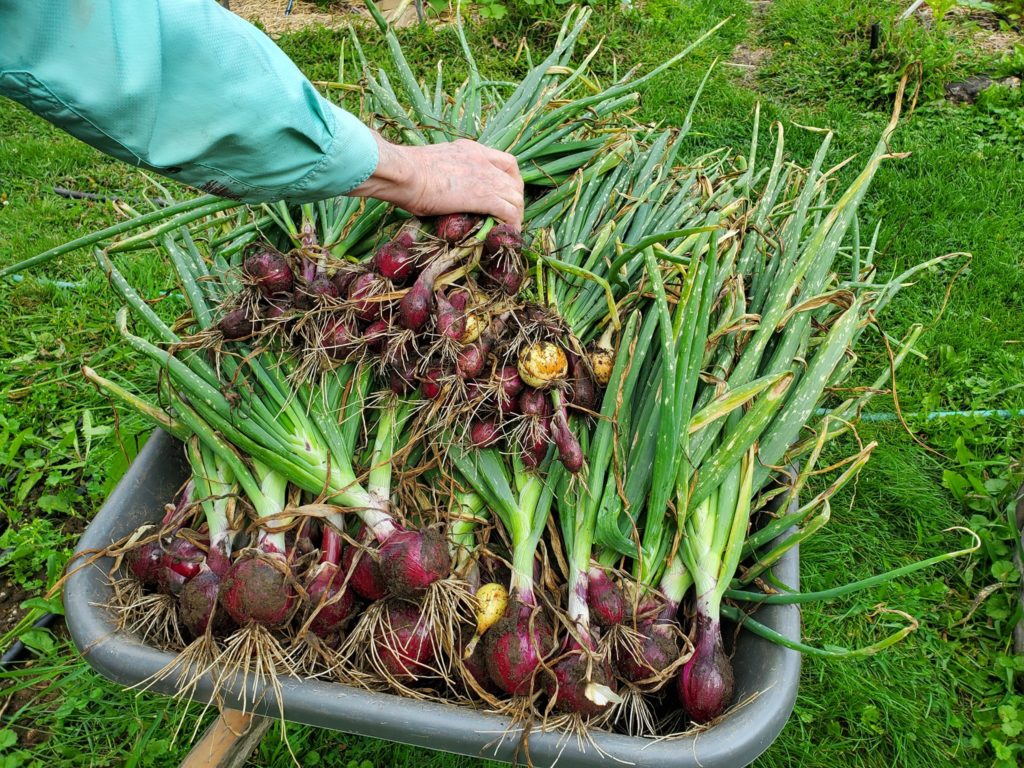
White onions and shallots had been harvested earlier in the week, so all that was left was to pull the beautiful red and yellow onions. Those, too, were divided into shares for gardeners and the food pantry.
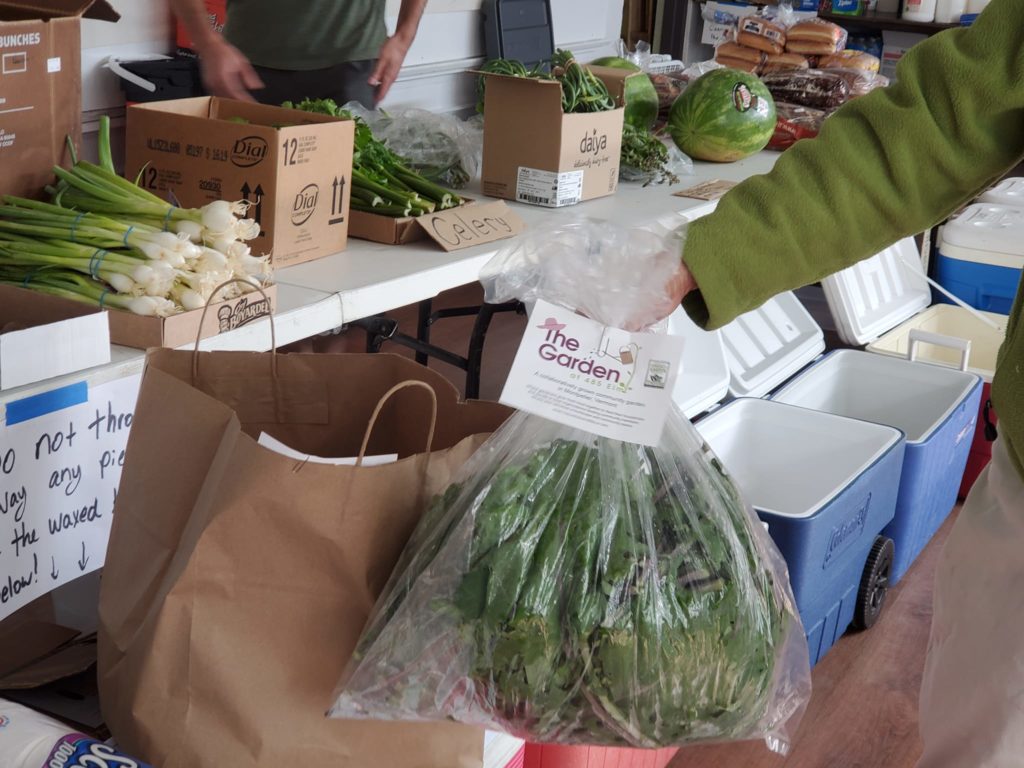
The Montpelier Food Pantry, whose site was inundated during the historic July flood, is operating out of the Center for Arts and Learning. Gardeners were delighted to provide garlic, onions, and beautiful leaves of kale.





